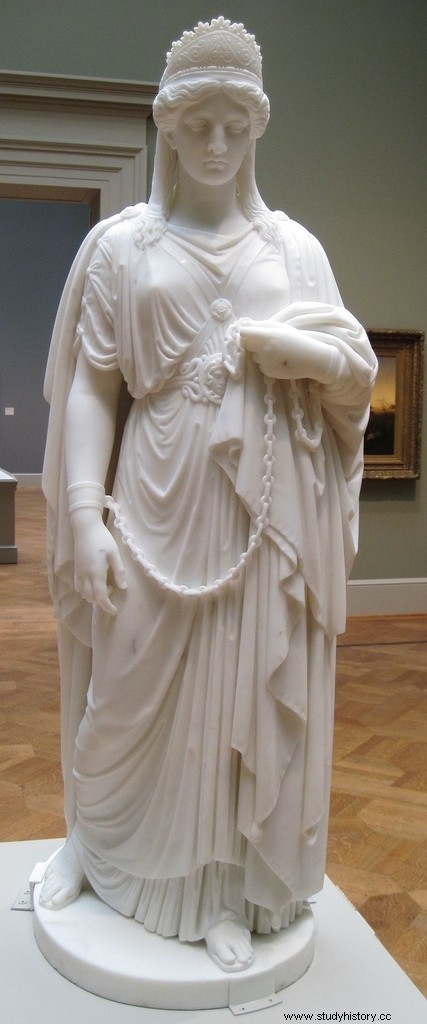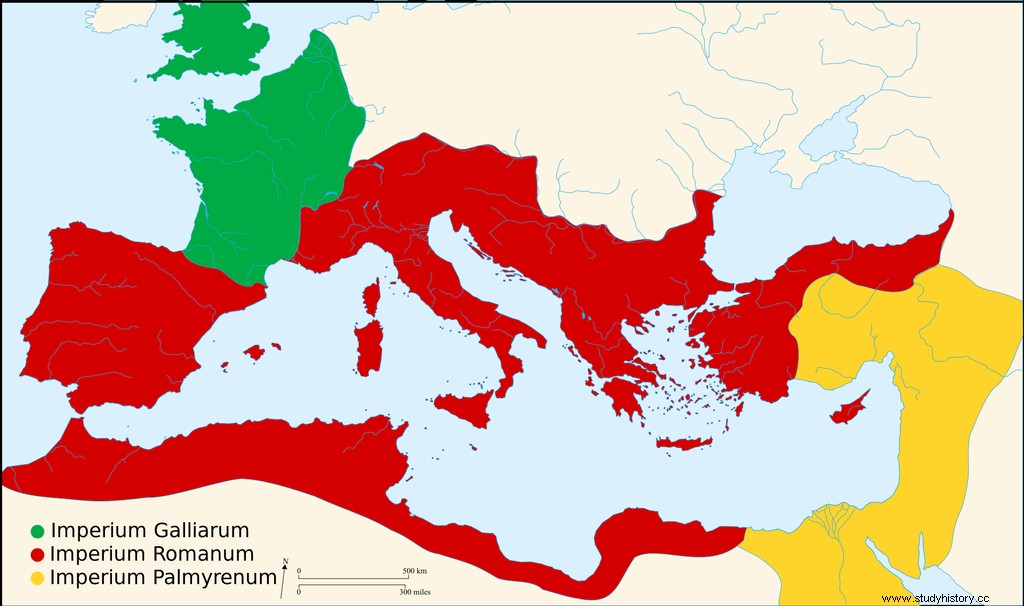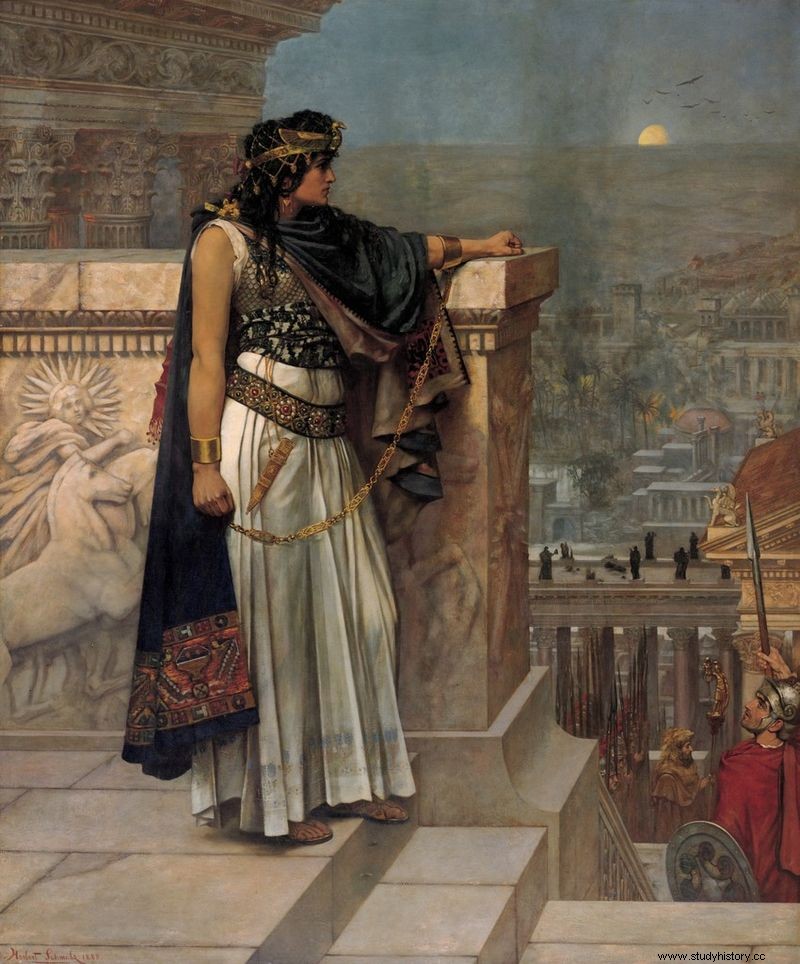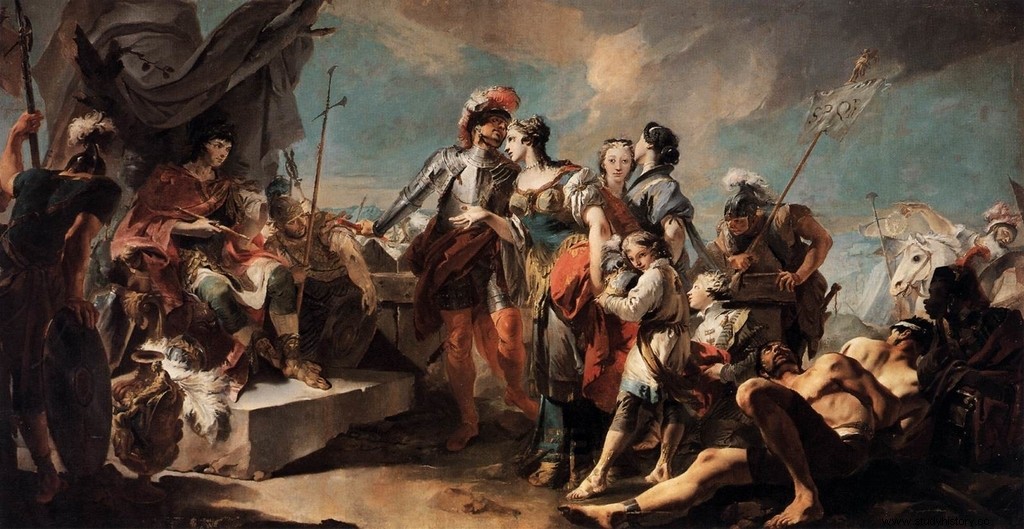
Various women appear in Roman history. There are wise mother-type women such as Caesar's mother Aurelius and Gracchi brothers' mother Cornelia, but the most prominent are the villain-type women.
The best example is the two princesses of Emperor Claudius, who are the villains of Agrippina and Messalina.
It may be said that Zenobia, the Queen of the Palmyra Empire, is also a woman who belongs to the villain type.
Palmyra Empire

In 260 AD, when the Three Kingdoms era was about to end in China, Rome was in a situation where the country was divided into three parts. The cause was that Roman emperor Valerianus was captured after the battle with the Sassanid Persia, and rebellions continued in various places.
Emperor Gallienus, who succeeded him, tried to manage the situation, but could not control the rebellion, and he was ineffective in dealing with the Sasanian Empire attacking from the east. There, Odana Etus, who was in the trading city of Palmyra, organized a vigilant group against the Sasanian Persia, and Gallienus took him to the position of commander-in-chief of the East.
Odana Etus himself fought well against the Syrian Emperor and the Sassanid Empire, and was active in attacking the capital Ctesiphon, but in 267, his nephew Maeonis assassinated him and his son.
It is said that it was Zenobia, the second wife of Odana Etus, who controlled this assassination behind the scenes.
The obsolete Maeonius was immediately executed, and the emperor of the Palmyrene Empire was appointed Vaballathus, the son of Zenobia, who himself claimed to be the descendant of Cleopatra and reigned as a queen.
Zenobia's wisdom and treasure

Xenovia is known to be a fairly well-educated person, fluent in Greek, Latin, Syriac and Arabic in addition to her native Egyptian, as well as Homer and Plato's books. It seems that he had enough wisdom to write a book review.
She was also a strategist, and her husband accompanied her when fighting the Sassanid Empire and provided strategic advice.
In fact, the Palmyrene Empire has expanded rapidly since Zenobia came to power, and she has territories such as Cappadocia and Antioch in Syria.
Antioch was one of the largest cities in Rome at the time and was one of the three largest cities alongside Egypt's Alexandria and Rome.
Since Alexandria was also in the hands of it, it can be said that the Palmyra Empire was the largest economic nation in the world in terms of economic circumstances at that time.
18th-century historian Edward Gibbon made Zenobia "one of the best women in the Orient".
He does not call himself the successor to Cleopatra to Date.
Fight and destruction with Emperor Aurelian

Zenobia was an excellent queen, but things changed when Emperor Aurelian appeared in Rome.
Zenobia opposes the situation where the Roman emperor himself invades the Palmyra Empire with an alliance with the Sassanid Empire. Her only action was to lose her national cause and her corps to be organized by mercenaries hired for money.
Although the country is disturbed, the strength of the Roman army, which has been trained with the will to protect its own country, is still alive, and the reinforcements from the Sasanian Empire, which it relied on, did not arrive, and Antioch, Emesa, and Palmyra three times. After a decisive battle, Zenobia is captured.
The above picture is said to depict the captive Zenobia.
Zenobia, captured by Roman soldiers, begged Rome for her life, and she began to make excuses that she had only been deceived by her generals. Rome listened to this and executed Palmyra's chief vassals, and also killed the son of Zenobia, the emperor of Palmyra, but kept only the symbolic Zenobia alive and decorated it with splendid decorations such as the golden chain. He was dressed and made a spectacle at the triumphal ceremony in Rome.
She was then given her own mansion, and she married a senator and was blessed with her child's treasure and lived happily for a long time.
She lived longer than Emperor Aurelian, and in a sense she may have been the best-winning woman in world history.
